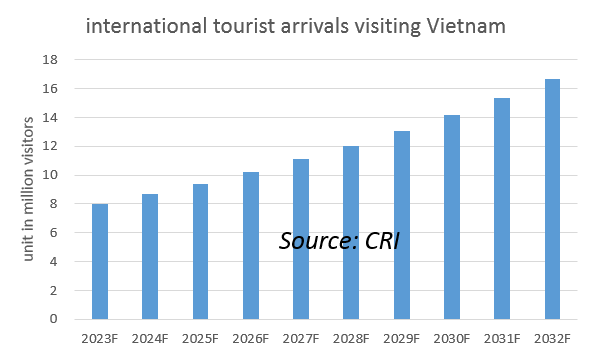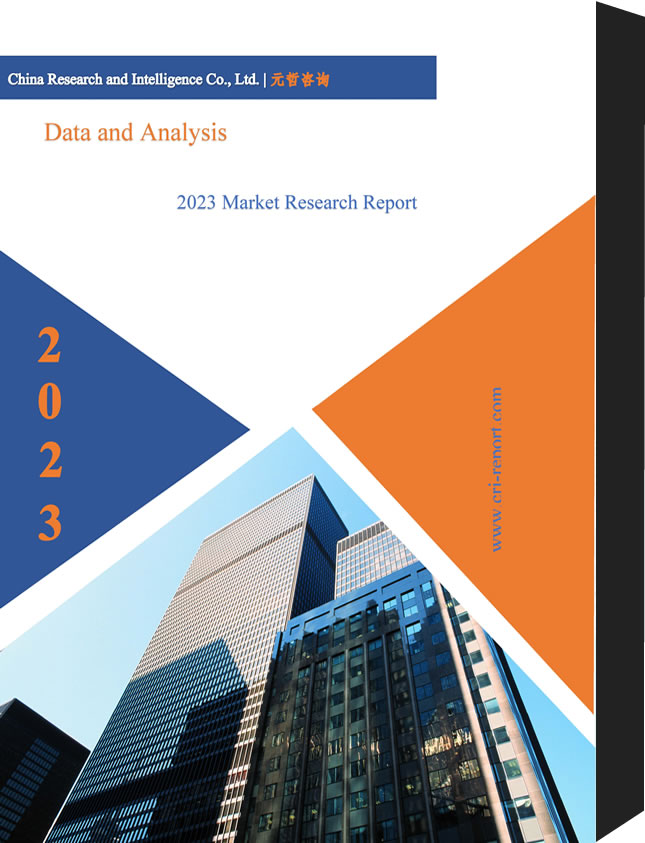Description
Southeast Asia Hotel Industry Overview
Tourism is one of the economic pillar industries in Southeast Asia and one of the main drivers of its economic growth. In 2019, tourism contributed US$393 billion to the GDP of Southeast Asia. According to CRI’s analysis, since 2022, with the global epidemic situation gradually improving, countries have gradually cancelled epidemic prevention measures and resumed normal production and life, and the outlook for tourism development in Southeast Asia is sound.
Hotels are an important part of the tourism industry. With the recovery of tourism in Southeast Asia and the introduction of relevant policies by the governments of Southeast Asian countries to support the development of the hotel industry, the market size of the hotel industry will also expand. The future is expected to see more hotels entering the market. At the same time, as the number of hotels in Southeast Asia rises and competition becomes fierce, it will also further improve its service quality to meet the needs of international and domestic tourists for leisure or business.

Southeast Asia in this report includes 10 countries: Singapore, Thailand, Philippines, Malaysia, Indonesia, Vietnam, Myanmar, Brunei, Laos and Cambodia. With a total population of over 600 million by the end of 2021, Southeast Asia has an overall economic growth rate higher than the global average and is one of the key drivers of future global economic growth.
According to CRI’s analysis, the economic levels of the 10 Southeast Asian countries vary greatly, with Singapore being the only developed country with a per capita GDP of about US$73,000 in 2021. While Myanmar and Cambodia will have a GDP per capita of less than US$2,000 in 2021. The population and minimum wage levels of each country also vary greatly. Brunei, which has the smallest population, will have a total population of less than 500,000 people in 2021, while Indonesia, which has the largest population, will have a population of about 275 million people in 2021.
Southeast Asia’s developed tourism industry has also attracted international brands to invest, with Accor Group and Wyndham Hotels & Resorts having several hotels in Southeast Asia.
CRI expects the hotel industry in Southeast Asia to maintain growth from 2023-2032. On the one hand, with the economic development in Southeast Asia, the living standard of residents will improve and the demand for leisure travel and other entertainment will increase, and on the other hand, the growth in the number of international travelers to the Southeast Asian region will also drive its hotel industry.
Topics covered:
- Southeast Asia Hotel Industry Status and Major Sources in 2018-2022
- What is the Impact of COVID-19 on Southeast Asia Hotel Industry?
- Which Companies are the Major Players in Southeast Asia Hotel Industry Market and What are their Competitive Benchmarks?
- Key Drivers and Market Opportunities in Southeast Asia Hotel Industry
- What are the Key Drivers, Challenges, and Opportunities for Southeast Asia Hotel Industry during 2023-2032?
- What is the Expected Revenue of Southeast Asia Hotel Industry during 2023-2032?
- What are the Strategies Adopted by the Key Players in the Market to Increase Their Market Share in the Industry?
- What are the Competitive Advantages of the Major Players in Southeast Asia Hotel Industry Market?
- Which Segment of Southeast Asia Hotel Industry is Expected to Dominate the Market in 2032?
- What are the Major Adverse Factors Facing Southeast Asia Hotel Industry?
Table of Contents
1 Singapore Hotel Industry Analysis
1.1 Singapore Hotel Industry Development Environment
1.1.1 Geography
1.1.2 Population
1.1.3 Economy
1.1.4 Minimum Wage in Singapore
1.2 Singapore Hotel Industry Operation 2018-2022
1.2.1 Size of the Hotel Industry
1.2.2 Hotel Demand
1.3 Analysis of Major Hotel Brands in Singapore
2 Analysis of Thailand’s Hotel Industry
2.1 Development Environment of Thailand’s Hotel Industry
2.1.1 Geography
2.1.2 Population
2.1.3 Economy
2.1.4 Minimum Wage in Thailand
2.2 Thailand Hotel Industry Operation Status 2018-2022
2.2.1 Hotel Industry Size
2.2.2 Hotel Demand
2.3 Analysis of Major Hotel Brands in Thailand
3 Analysis of the Hotel Industry in the Philippines
3.1 Development Environment of the Hotel Industry in the Philippines
3.1.1 Geography
3.1.2 Population
3.1.3 Economy
3.1.4 Minimum Wage in the Philippines
3.2 Hotel Industry Operation in the Philippines 2018-2022
3.2.1 Hotel Industry Size
3.2.2 Hotel Demand
3.3 Analysis of Major Hotel Brands in the Philippines
4 Malaysia Hotel Industry Analysis
4.1 Malaysia Hotel Industry Development Environment
4.1.1 Geography
4.1.2 Population
4.1.3 Economy
4.1.4 Minimum Wage in Malaysia
4.2 Malaysia Hotel Industry Operation 2018-2022
4.2.1 Hotel Industry Size
4.2.2 Hotel Demand
4.3 Analysis of Major Hotel Brands in Malaysia
5 Indonesia Hotel Industry Analysis
5.1 Indonesia Hotel Industry Development Environment
5.1.1 Geography
5.1.2 Population
5.1.3 Economy
5.1.4 Minimum Wage in Indonesia
5.2 Indonesia Hotel Industry Operation 2018-2022
5.2.1 Hotel Industry Size
5.2.2 Hotel Demand
5.3 Analysis of Major Hotel Brands in Indonesia
6 Vietnam Hotel Industry Analysis
6.1 Development Environment of Vietnam’s Hotel Industry
6.1.1 Geography
6.1.2 Population
6.1.3 Economy
6.1.4 Minimum Wage in Vietnam
6.2 Operation of the Hotel Industry in Vietnam 2018-2022
6.2.1 Hotel Industry Size
6.2.2 Hotel Demand
6.3 Analysis of Major Hotel Brands in Vietnam
7 Analysis of Myanmar’s Hotel Industry
7.1 Development Environment of Myanmar Hotel Industry
7.1.1 Geography
7.1.2 Population
7.1.3 Economy
7.1.4 Minimum Wage in Myanmar
7.2 Operation of the Hotel Industry in Myanmar 2018-2022
7.2.1 Hotel Industry Size
7.2.2 Hotel Demand
7.3 Analysis of Major Hotel Brands in Myanmar
8 Analysis of Brunei’s Hotel Industry
8.1 Development Environment of Brunei Hotel Industry
8.1.1 Geography
8.1.2 Population
8.1.3 Economy
8.1.4 Brunei Minimum Wage
8.2 Brunei Hotel Industry Operation Status 2018-2022
8.2.1 Hotel Industry Size
8.2.2 Hotel Demand
8.3 Analysis of Major Hotel Brands in Brunei
9 Analysis of the Hotel Industry in Laos
9.1 Development Environment of the Hotel Industry in Laos
9.1.1 Geography
9.1.2 Population
9.1.3 Economy
9.1.4 Minimum Wage in Laos
9.2 Operation of the Hotel Industry in Laos 2018-2022
9.2.1 Hotel Industry Size
9.2.2 Hotel Demand
9.3 Analysis of Major Hotel Brands in Laos
10 Cambodia Hotel Industry Analysis
10.1 Development Environment of Cambodia’s Hotel Industry
10.1.1 Geography
10.1.2 Population
10.1.3 Economy
10.1.4 Minimum Wage in Cambodia
10.2 Cambodia Hotel Industry Operation Status 2018-2022
10.2.1 Hotel Industry Size
10.2.2 Hotel Demand
10.3 Analysis of Major Hotel Brands in Cambodia
11 Southeast Asia Hotel Industry Outlook 2023-2032
11.1 Analysis of Factors Influencing the Development of Southeast Asia Hotel Industry
11.1.1 Favorable Factors
11.1.2 Unfavorable Factors
11.2 Southeast Asia Hotel Industry Size Forecast 2023-2032
11.3 Southeast Asia Hotel Industry Market Demand Forecast 2023-2032
11.4 Impact of COVID -19 Epidemic on the Hotel Industry




Reviews
There are no reviews yet.